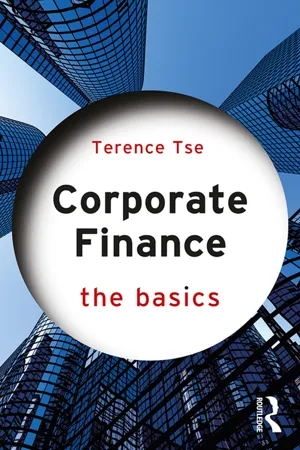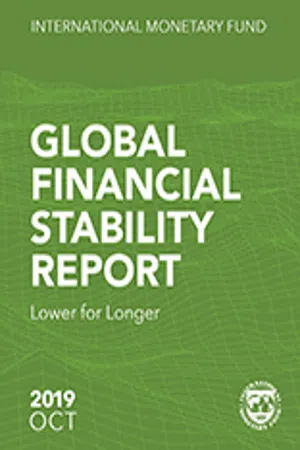Corporate Debt Yield
Corporate debt yield refers to the rate of return an investor can expect to receive from investing in a company's debt. It is calculated by dividing the annual interest payments by the current market price of the debt. This metric helps investors assess the attractiveness of a company's debt securities as an investment.
3 Key excerpts on "Corporate Debt Yield"
- eBook - ePub
- Terence C.M. Tse(Author)
- 2017(Publication Date)
- Routledge(Publisher)
...These two sources of gains boil down to the rate of return, called yield. In other words, the return on a bond or the cost of using it is often a matter of how the bonds are structured around these gains. This chapter has also examined the implications of debt on a company’s capital structure through looking at leverage and tax benefits. But, as the concept of leverage should have made it clear, debt is closely related to shareholders’ equity. So, what exactly is equity? This is the topic we turn to in the next chapter. Notes 1 Naturally, this process is now being done by technology. 2 So, why is Charlie getting a 20 per cent return? Even though it is not related to Bob’s investment, such a return represents compensation for the risk of lending to Bob but not for the potential outcomes of the project....
- eBook - ePub
The Blueprint To Commercial Real Estate Investing: Your Guide To Make Sustainable Stream Of Passive Income Through Smart Buy
Achieve Financial Independence.
- Michael Henry(Author)
- 2020(Publication Date)
- Michael Henry(Publisher)
...Loan Sizing – Debt Yield: So Last but not least in our commercial real estate loan sizing, we have our debt yield. And our debt yield is again, just like the debt service coverage ratio, going to be one of the two most important metrics that a lender is going to look at when they're sizing a commercial real estate loan. Now, a debt yield is a pretty simple calculation. So it's not as much of working backwards As the DSCR was and it's a little bit simpler to calculate. So the debt yield is simply the annual net operating income divided by the total loan amount. And again, this is a measure of risk for the lender. So if the lender has to foreclose on the property and the owner of that property free and clear so, they foreclose on the property but the net operating income stays the same. The debt yield measures what the yield to the lender would be. So again, we have our example same down here, Where we have our net operating income of $700,000, we have the same loan terms, the same 10 year loan term, we have 4.35 all in interest rate, 30 year amortization, no interest only period. And now we have a minimum debt yield of 7.6%. So, lender is saying that at a minimum, that net operating income divided by the total loan amount needs to be 7.6%. So this is really based on your net operating income. So we want to calculate what the maximum amount of proceeds can be for the lender and still hit the 7.6% debt yield....
- International Monetary Fund. Monetary and Capital Markets Department(Author)
- 2019(Publication Date)
- INTERNATIONAL MONETARY FUND(Publisher)
...Debt has risen and is increasingly used for financial risk-taking—to fund corporate payouts to investors, as well as mergers and acquisitions (M&A), especially in the United States. In addition, global credit is increasingly flowing to riskier borrowers. The April 2019 GFSR discussed the credit quality of large firms, BBB-rated bond issuers, and leveraged loan borrowers. This chapter presents a comprehensive assessment of the corporate sector credit quality using the broadest data coverage available. 5 It concludes that debt-at-risk (debt owed by companies whose earnings are insufficient to cover interest payments) and speculative-grade debt 6 are already elevated in several major economies and could approach or exceed crisis levels in an adverse scenario considered by the IMF staff. Banks and nonbank financial institutions with significant exposures to small and medium-sized enterprises (SMEs), syndicated leveraged loans, direct credit, and high-yield corporate bonds may be particularly susceptible to losses in such an adverse scenario and could amplify the shock by curtailing credit to the economy. The Outlook for Firms Has Weakened but Funding Conditions Remain Favorable Slowing global growth and escalating trade disputes have started to affect nonfinancial firms. In China, Europe, and the United States, expected corporate sales have decelerated this year (Figure 2.1, panel 1). In addition, profit margins—although still solid—have declined in the United States this year amid rising wages and elevated input costs (Figure 2.1, panel 2), and managers have become more concerned about tariffs. As a result, corporate earnings forecasts have been revised down since April (Figure 2.1, panel 3)...


